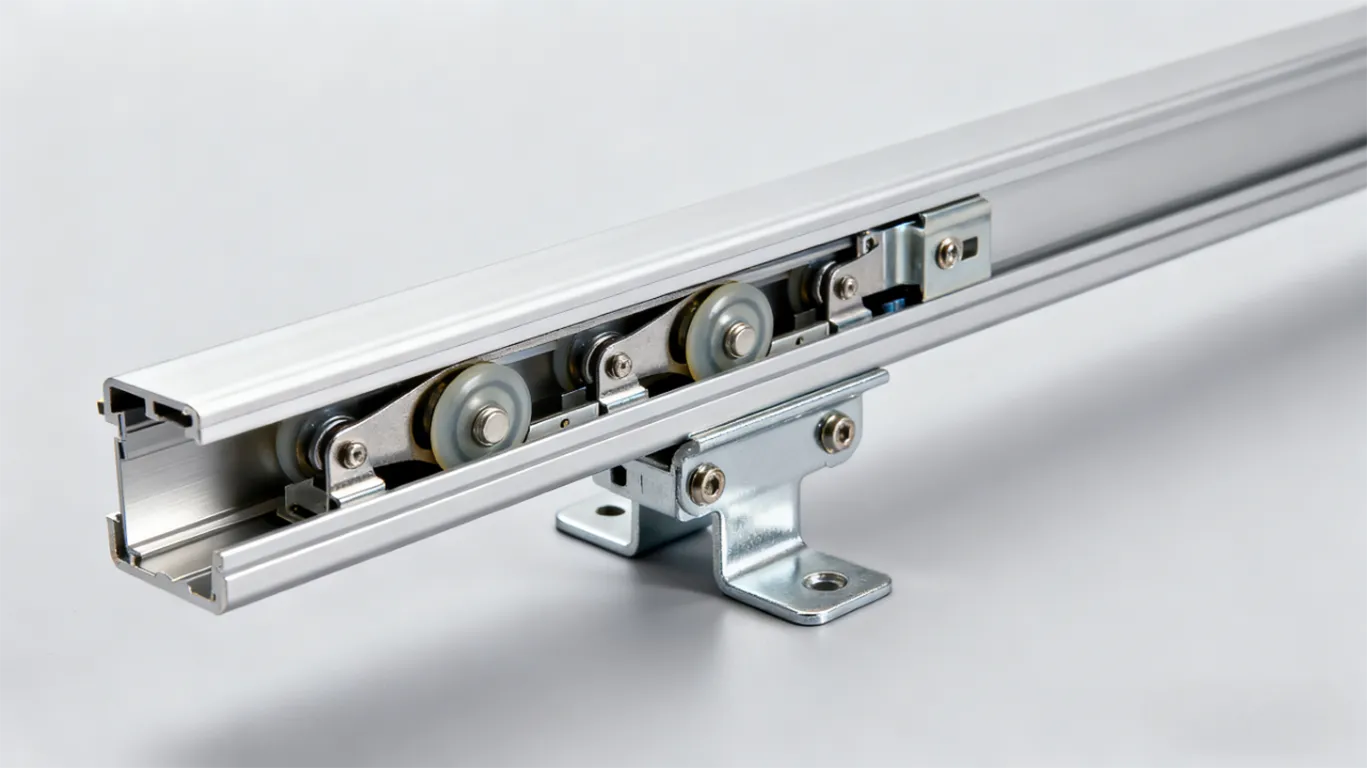
Introduction
The structural design of a curtain track determines its durability, load capacity, and long-term performance. Beyond materials like aluminium or steel, the engineering behind the track profile, glide system, mounting structure, and accessories plays a key role in overall reliability. This article provides a technical breakdown of how curtain track systems are engineered and how each component contributes to stable and smooth operation.
1. Track Profile Engineering
The geometry and thickness of the track profile directly affect its strength and bending resistance.
1.1 Cross-Section Shape
Common industrial-grade tracks use:
- Rectangular profiles → High rigidity, good for ceiling mounting
- U-shape or C-shape profiles → Optimized for smooth glide and lower friction
- Reinforced double-wall profiles → Designed for heavy-duty applications
The deeper the profile, the better its resistance to vertical bending under continuous loads.
1.2 Wall Thickness
Increasing the wall thickness improves rigidity, especially for extra-long installations (3m–8m).
- Standard thickness: 1.0–1.2 mm
- Heavy-duty options: 1.5–2.0 mm
A thicker profile reduces deflection and enhances stability.
Load Capacity and Stress Distribution
Curtain tracks must evenly distribute weight to prevent deformation over time.
2.1 Load Calculations
Load capacity depends on:
- Material strength
- Profile geometry
- Bracket spacing
- Mounting type (ceiling or wall)
Typical load ranges:
- Aluminium tracks: 5–15 kg
- Heavy-duty steel tracks: 20–40+ kg
2.2 Deflection Control
To reduce bending:
- Use shorter bracket spacing (30–50 cm for heavy curtains)
- Choose reinforced aluminium profiles
- Add center support brackets for long spans
Proper stress distribution prevents mid-section sagging.
3. Glide System Technology
The glide system determines smoothness, noise level, and long-term usability.
3.1 Glide Materials
Common glide materials include:
- POM engineering plastic → High wear resistance, low friction
- Nylon → Silent and flexible
- Roller-bearing gliders → Ultra-smooth for heavy curtains
3.2 Glide Channel Design
Precision in the inner channel is essential:
- Narrow channels reduce shaking
- Smooth inner finishing reduces friction
- Rounded edges minimize wear on gliders
For heavy-duty systems, roller gliders dramatically improve long-term stability.
4. Mounting Structure and Stability
Mounting hardware is as important as the track itself.
4.1 Ceiling vs Wall Mounting
- Ceiling mounting provides better load distribution
- Wall mounting requires stronger brackets and deeper anchors
4.2 Bracket Engineering
Key elements of bracket design include:
- Metal thickness
- Mounting base width
- Anti-twist reinforcement
- Screw hole positioning
High-precision brackets ensure the track maintains alignment under high loads.
5. Surface Treatment for Durability
Surface finishing protects the track from corrosion, abrasion, and discoloration.
5.1 Common Treatments
- Anodizing → Corrosion-resistant, ideal for aluminium
- Powder coating → Uniform color, added durability
- Electroplating (steel) → Rust protection
- Sandblasting + coating → Improved adhesion and matte texture
5.2 Environmental Resistance
Proper finishing ensures performance in:
- Coastal humidity
- High-temperature interiors
- Commercial spaces with long daily use
6. System Integration and Accessories
A stable curtain track system relies on accessory compatibility.
6.1 Essential Components
- End caps
- Ceiling/wall brackets
- Gliders or roller carriers
- Joiners for long tracks
- Stopper clips
6.2 System Compatibility
A well-designed system allows:
- Seamless extension
- Curve-fitting
- Smooth transition across joints
Commercial-grade tracks must maintain glide consistency even across joined sections.
Conclusion
The performance of a curtain track depends on more than material choice. Structural engineering—from profile design to glide system and installation hardware—determines load capacity, stability, and long-term reliability. High-quality tracks combine optimized geometry, durable surface treatment, reinforced mounting systems, and precision glide components to deliver smooth, stable, and long-lasting operation.